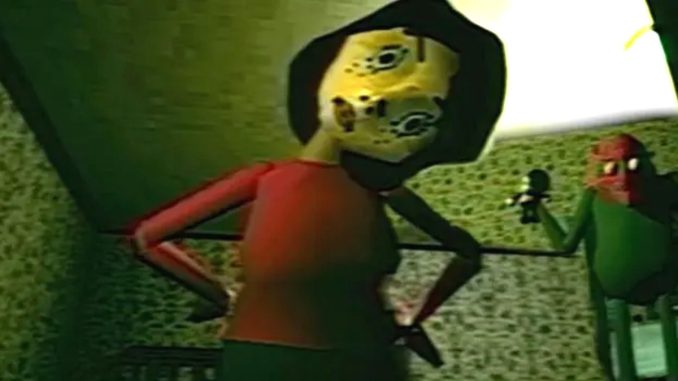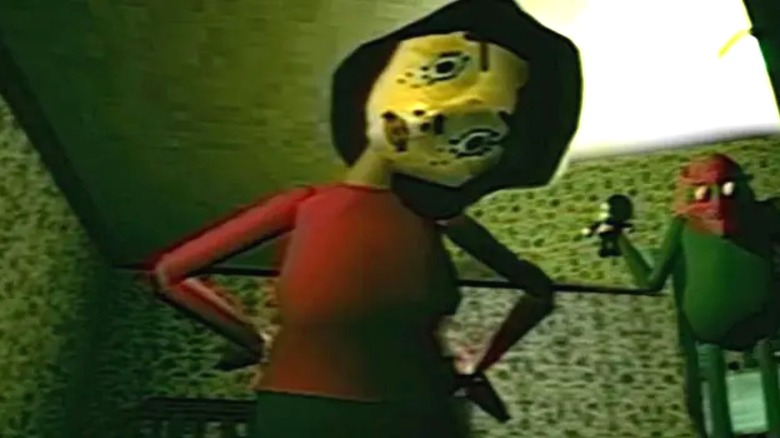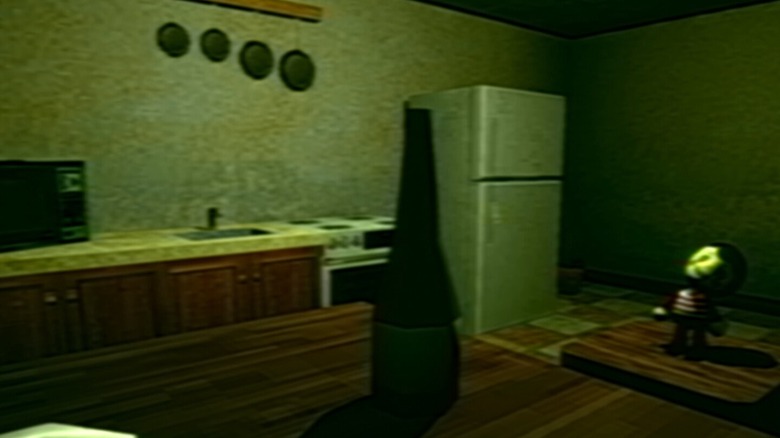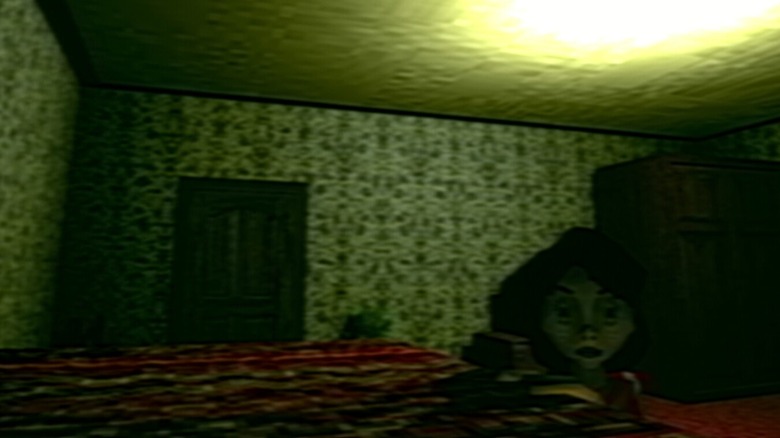
Content warning: This article discusses themes and subject matter that some readers may find triggering, including child abuse. This post also contains spoilers for “Bad Parenting 1: Mr. Red Face.”
The world of unsettling indie horror games brims with underappreciated gems. Some titles have found a way to make their mark on mainstream avenues, such as the first-person survival horror “Amnesia: The Dark Decent” and the truly nightmarish, one-of-a-kind “Cry of Fear.” But if you dig deep into the dark corners of this genre, you might stumble upon overlooked stories that are designed to evoke awe and wonder. I remember playing Bit Golem’s “Dagon” — a stunning, frightening 3D experience about H. P. Lovecraft’s Cthulhu mythos — and being riveted by the psychological layers that the game dives into solely through its worldbuilding. Even though “Dagon” is a beautiful labor of love, it is not as popular as it should be (especially for a game that is available to download for free). Conversely, some indie titles unexpectedly burst into the popular consciousness, defying expectations with a visceral, offbeat exploration of complex subject matters. Developer/publisher 2OO2’s “Bad Parenting 1: Mr. Red Face” is an example of the same.
Before we dive into whether the game is based on a true story, let us look at the barebones aspects of the narrative. “Bad Parenting 1: Mr. Red Face” opens from the perspective of a young boy named Ron, whose gaze is tilted up towards his mother. Ron expresses disappointment because of his mother’s discontinuous presence, as she works late and is unable to make time for his birthday. Ron’s mother tries to placate her child with stories about a certain mythical figure named Mr. Red (a variation of Santa, if you will) and urges him to be good by going to bed early. Although Ron is excited to receive gifts from Mr. Red in exchange for being obedient, his father injects discomfort into the atmosphere by being verbally abusive. The same night, Ron glimpses a frightening figure with a red face, creeping near his room before he disappears.
This marks the beginning of the end, as Ron experiences surreal events that he must navigate alongside a sentient doll that looks like him, which claims to be a gift from Mr. Red. What ensues is a heavy, harrowing exploration of child abuse and trauma, and how it impacts survivors even after they can physically leave abusive environments.
Bad Parenting 1: Mr. Red Face is a fictional story about the horrors of abuse
Rumors about “Bad Parenting” being based on a true story can be traced back to a TikTok video, in which a parallel has been drawn between the events of the game and the real-life murder of a child. On May 24, 2013, eight-year-old Gabriel Fernandez was abused and tortured by his mother and her boyfriend for months, which led to his tragic death soon after. Both perpetrators have been charged and convicted of first-degree murder, along with counts of torture and child abuse. The abovementioned TikTok insinuates that “Bad Parenting” has been partly inspired by this horrifying real-life murder, but there are no connections between them whatsoever, save for the death of a child as a direct consequence of parental abuse in the game’s narrative. This is not the first time a TikTok video has connected a bone-chilling crime to a fictional storyline to generate sensationalized discourse and shock value.
If we take a look at 2OO2’s Steam page for “Bad Parenting,” Mr. Red Face is noted as “fictional.” The game also comes with a trigger warning about “scenes that harm/hurt characters who are children,” along with mature, disturbing content that can be potentially distressing for survivors of child abuse and domestic violence. Such sensitive subject matters do not necessarily have to be based on real-world tragedy to be jarring or impactful, and “Bad Parenting” uses a short, yet effective linear experience to root us in Ron’s perspective of the world around him. When you move around the scaled-down, pixelated rooms of Ron’s apartment and interact with objects as a child like him would, the trauma that rushes back to him hits harder. When Ron learns that his soul has been stuck in his house for 14 days since his father murdered him, the implications of cyclical abuse and its aftereffects linger even after the credits roll.
Although “Bad Parenting” can be viewed as a worthwhile indie horror experience, we need to talk about the horrific allegations surrounding the game’s developer and how this completely alters how the game should be viewed.
Why the fate of Bad Parenting 2 might be up in the air
After “Bad Parenting 1: Mr. Red Face” ends on a tragic, bittersweet note, Anh is credited as the person behind the story, design, and programming of the game. A quick look at the game developer’s page on itch.io makes it clear that 2OO2 is a one-person operation. Anh initially announced that their goal was to release the sequel by the end of 2024″ (there’s also a “Bad Parenting 2: Coming soon!” added at the end of the game’s description). As of the time of writing, “Bad Parenting 2” has not been released, and there have been no official updates about a potential Part 2 that might continue the story, or tell a new one. Although delays happen all the time due to creative or logistical factors, the fate of “Bad Parenting 2” is iffy at the moment due to serious allegations surrounding the game’s developer, Anh.
A (now-deleted, but still viewable) document replete with screenshots alleges Anh of sending inappropriate messages to a 14-year-old minor they met on 2OO2’s official Discord server, detailing instances of grooming that are, frankly, chilling to read. Anh has since responded with their own document, in which they do not deny the allegations levied against them, and acknowledges that the minor in question had become the target of inappropriate behavior by some adults within the server. Anh’s statement shirks accountability by shifting blame to other Discord members (who allegedly participated in similar behavior) and reframes their own actions as wrong but well-intentioned. However, the trail of screenshots in the original document paints a very different, unsavory picture of the incidents that occurred. Moreover, Anh has also not refuted or questioned the integrity of the damning screenshots from the original document in their public statement.
Given that “Bad Parenting” is a game primarily about child abuse, the abovementioned incident has inevitably soured player perceptions of how it tackles the subject matter, along with the dubious artistic intent attached to the project. If we re-evaluate the game with this mind, it becomes clear that the 20-minute storyline deals with overtly uncomfortable subject matters but rarely puts in the care or sensitivity necessary to dissect such a harrowing premise. Despite the jarring imagery underlining the horrors of trauma (which is hard-hitting and unsettling enough to create an impact on our minds), the intent and execution come off as terribly hollow.
Even if we do get a “Bad Parenting 2” sometime soon, it is a much better idea to turn our attention toward indie horror titles that go beyond shock value and treat sensitive subjects with the care and complexity they deserve.




Leave a Reply